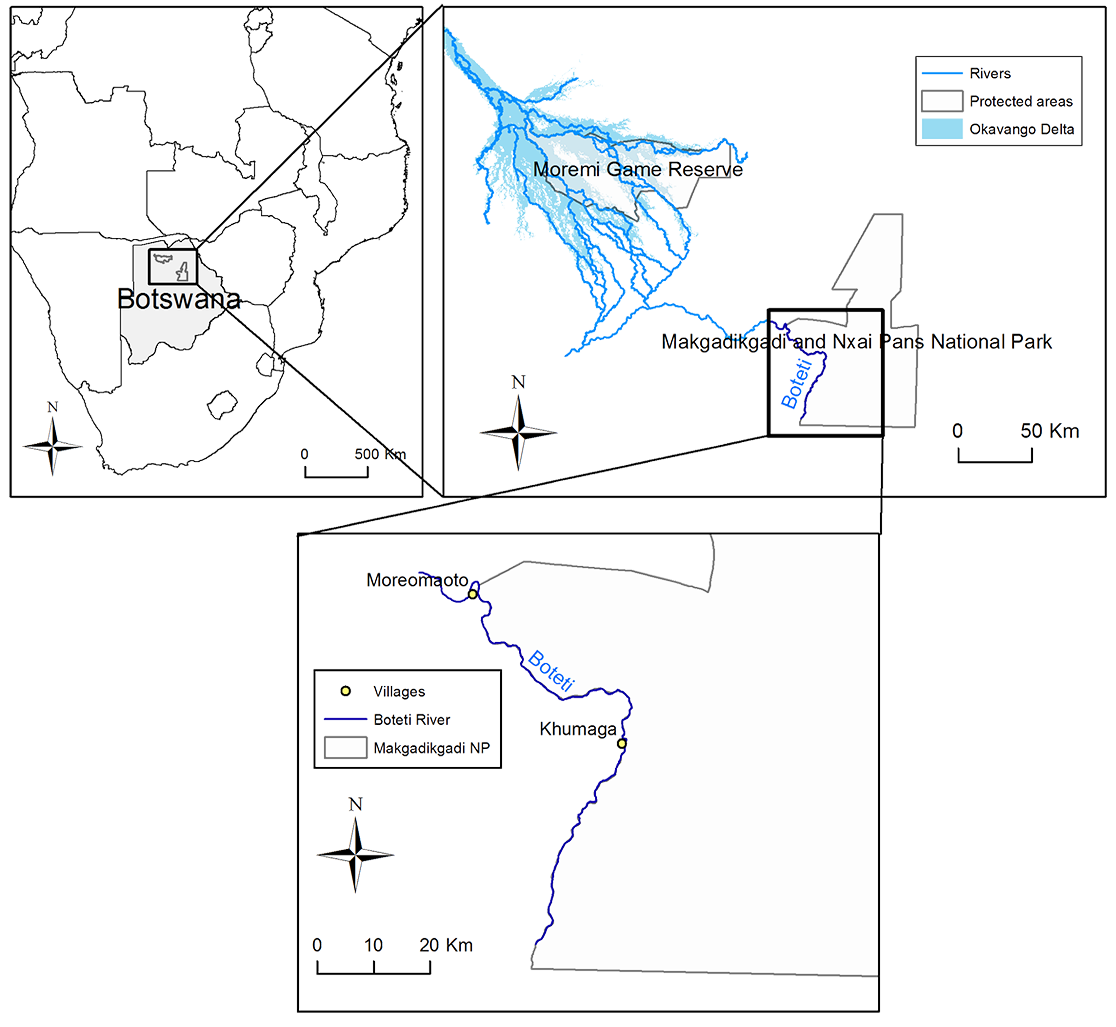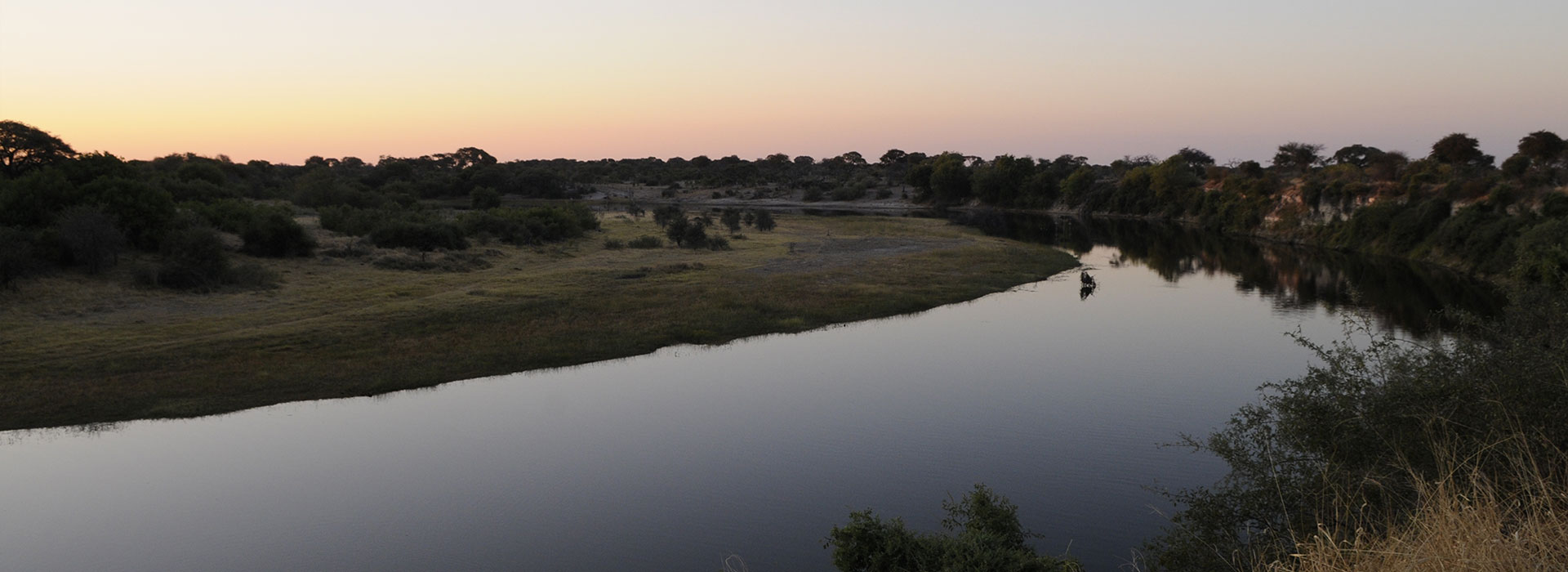STUDY AREA
Northern Botswana is home to approximately 130–150 000 African elephants, the largest population in the world.
Most of Botswana’s borders are not fenced, so elephants are free to roam across international borders into Zimbabwe, Zambia, Namibia, Angola and South Africa. Unfortunately, the current theory is that poaching pressure in these surrounding countries is so high that elephants are choosing to move into Botswana because it represents a relatively safe haven and thus increasing the population.
The Makgadikgadi Pans National Park is home to the world-famous saltpans that attract thousands of flamingos during their breeding season. The grasslands around those pans are a critical seasonal resource for vast herds of zebra and wildebeest that migrate there for the wet season, some travelling from the Boteti River and others moving in from the Okavango Delta. The waters of the Boteti attract high numbers of animals during the dry season when other ephemeral water sources diminish, and it is here that we are witnessing large groups of male elephants that are central to our research interests.
The relative permanence of the Boteti River is fairly recent, as, prior to 2009, it had been dry for 18 years. The changes wrought by the river on the Boteti environment are substantial, and we are seeing more and more elephants returning to their ancestral ranges, although for now we have seen very few breeding herds in the region.
The Elephants for Africa research camp is based on the banks of the Boteti River inside the National Park and opposite the village of Khumga (sometimes spelt Xhumaga) and near one of the park entrances. This is an ideal location to study the elephants inside the park as well as the impact they have if they utilise areas outside. It also provides us with the ideal opportunity to work with the community of Khumaga to understand their needs and requirements living in such close proximity to wildlife and help build a program to work towards human-wildlife coexistence.
The Makgadikgadi Pans National Park is home to the world-famous saltpans that attract thousands of flamingos during their breeding season. The grasslands around those pans are a critical seasonal resource for vast herds of zebra and wildebeest that migrate there for the wet season, some travelling from the Boteti River and others moving in from the Okavango Delta. The waters of the Boteti attract high numbers of animals during the dry season when other ephemeral water sources diminish, and it is here that we are witnessing large groups of male elephants that are central to our research interests.
The relative permanence of the Boteti River is fairly recent, as, prior to 2009, it had been dry for 18 years. The changes wrought by the river on the Boteti environment are substantial, and we are seeing more and more elephants returning to their ancestral ranges, although for now we have seen very few breeding herds in the region.
The Elephants for Africa research camp is based on the banks of the Boteti River inside the National Park and opposite the village of Khumga (sometimes spelt Xhumaga) and near one of the park entrances. This is an ideal location to study the elephants inside the park as well as the impact they have if they utilise areas outside. It also provides us with the ideal opportunity to work with the community of Khumaga to understand their needs and requirements living in such close proximity to wildlife and help build a program to work towards human-wildlife coexistence.

Map by E.Bennitt.


